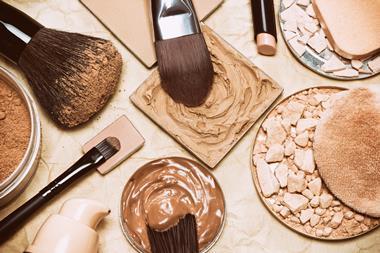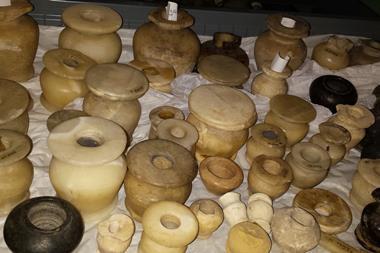Neutron and x-ray experiments reveal the microstructure of lotions to be more complex than scientists had thought

‘Our work has revealed that the textbook view of skin cream structure is, in some respects, rather naïve, and in other respects totally incorrect,’ says Delaram Ahmadi from King’s College London, UK, at the American Chemical Society’s national meeting in San Diego, US.
Together with David Barlow, also from King’s College, and the University of Manchester’s Jayne Lawrence, Ahmadi is the first to investigate the molecular structure of lotions with neutron scattering and x-ray experiments. Not only did they find the distribution of ingredients differs from what the textbooks list, they also discovered micellar structures that had never been seen before in skin creams.
Aqueous creams are not only a staple of the cosmetics industry, they are also used to treat skin conditions like eczema and psoriasis. Like mayonnaise, lotions are essentially oil–water emulsions. While commercial formulations contain around 20 ingredients, only a few of them are essential for emulsion formation and stability: oil, water, a surfactant, and one or two co-surfactants.
But there isn’t much known about how the components work together on a molecular level. ‘At the moment, the recipes for creams are based largely on trial and error,’ explains Ahmadi. This means it’s hard for manufacturers to predict how a lotion’s properties change when they add ingredients like sunscreens, preservatives or antioxidants.
According to the textbooks, oil droplets and membranes are the major structural components in aqueous creams. Surfactant molecules cover the oil droplets, which keeps them dispersed. Excess surfactants form stacks of bilayer membranes sandwiching water layers. But this is not what actually happens.
‘For the first time we reveal direct evidence not only for membrane-like structures but also for disk-shaped structures known as bicelles, which had never been seen before,’ Ahmadi says.
Her team focused on a very simple, five-ingredient formulation containing paraffin, water and the surfactant sodium dodecyl sulfate (SDS), co-surfactants cetyl and stearyl alcohol. By sequentially swapping each ingredient’s hydrogen atoms with deuterium, they determined each component’s molecular arrangement through neutron and x-ray scattering analysis.
While the researchers did find the textbook membranes, they also discovered an abundance of elliptical bilayer structures called bicelles. These, Ahmadi points out, could potentially be used to encapsulate and deliver lipophilic drugs.
However, the team was most surprised to find out what happens when they add pentanediol, an antimicrobial preservative. This water-soluble additive supposedly dissolves in the aqueous layers – the place where bacteria thrive. In fact, pentanediol sticks to the membranes and does not dissolve. This might mean that antimicrobials have little effect, and skin creams might not need to contain a preservative at all.
Ahmadi hopes that correcting the established view might help manufacturers to do away with unnecessary ingredients and help them to better predict how each component changes the cream’s properties. Her team is now working on repeating their experiments with a more complex formulation in which SDS is replaced with a natural phospholipid.












No comments yet